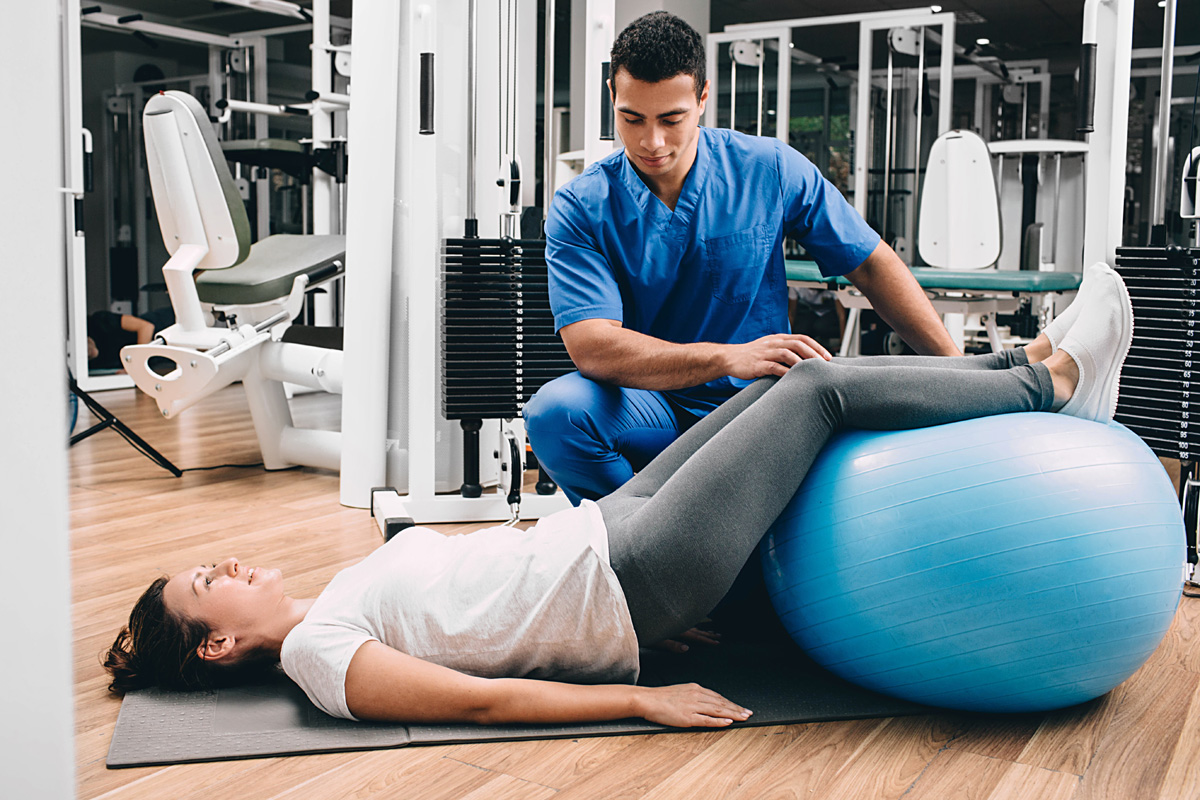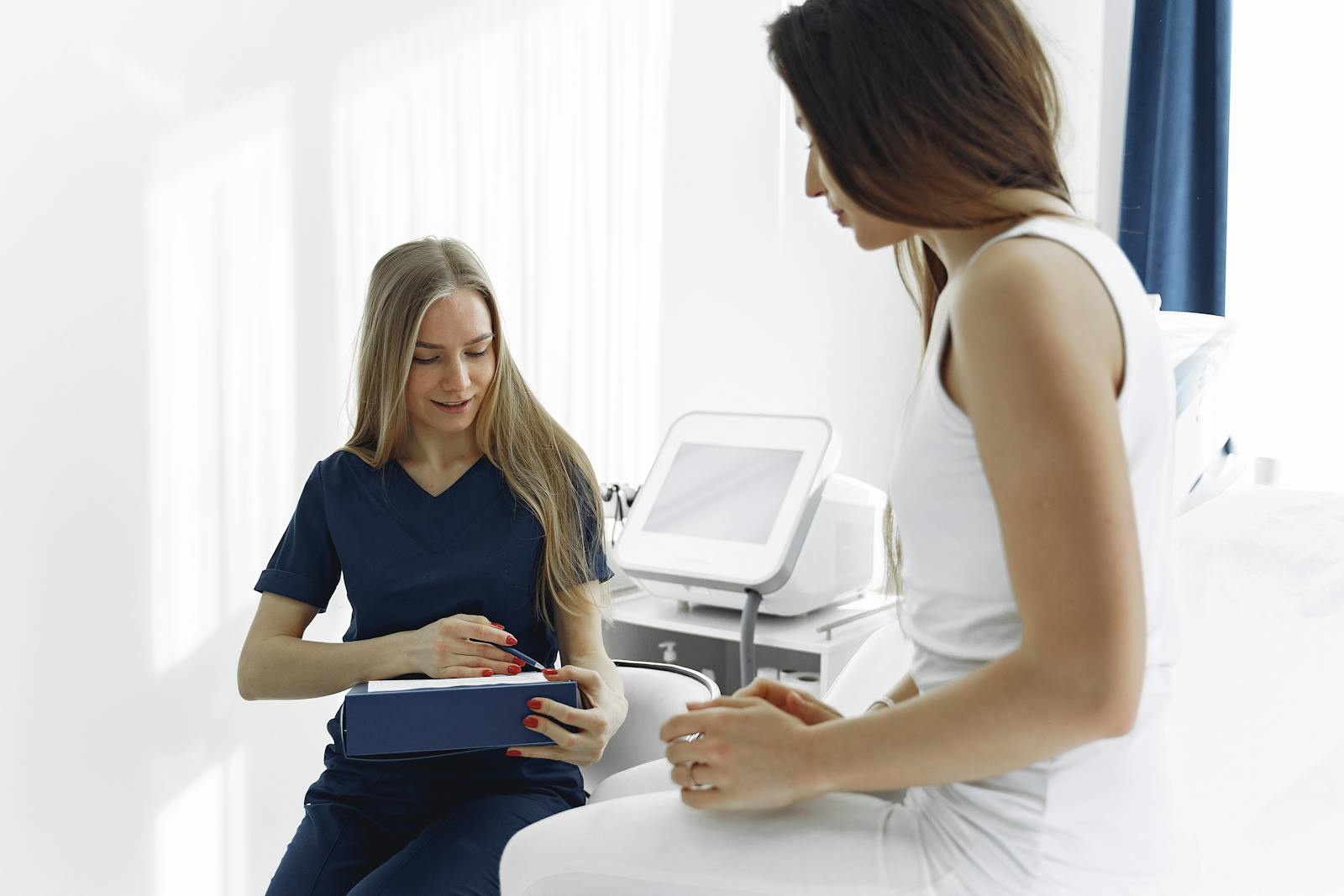The process of recovery from a coccygectomy, the surgical removal of the coccyx, can be a daunting journey filled with uncertainty. However, with the right strategies, this healing phase can be accelerated and made less challenging. This article outlines 14 vital tips, ranging from dietary considerations to mental health care, that could significantly improve your post-operative experience. These actionable insights could potentially transform the way you approach your recovery process, paving the way for a quicker, smoother return to normalcy. Are you ready to discover these essential tips?
Understanding Coccygectomy
Coccygectomy, a surgical procedure, involves the removal of part or all of the tailbone, technically known as the coccyx, which is located at the base of the spine. This procedure is typically performed to alleviate persistent tailbone pain, also known as coccydynia, which may not respond to conservative treatments.
The coccygectomy procedure entails an incision made in the region above the anus or through the anus itself. The coccyx is then exposed and detached carefully from the surrounding ligaments and muscles. Although it’s considered a somewhat complex surgery due to the coccyx’s proximity to significant structures such as the rectum and sacral nerves, it is usually completed within an hour or two.
Post-surgery, lifestyle changes are necessary for smooth recovery. Patients are usually advised to avoid sitting for extended periods. Special cushions or pillows, designed to relieve pressure on the coccyx, can help during the healing process. Regular, gentle exercises like walking can also aid in recovery by improving blood circulation. However, strenuous activities should be avoided until full recovery. Notably, each patient’s healing timeline may vary; thus, adherence to the surgeon’s post-operative instructions is paramount.
Role of a Balanced Diet
In addition to physical care and lifestyle modifications, maintaining a balanced diet plays a crucial role in supporting the body’s healing process post-coccygectomy. Consuming nutrient-rich foods can boost the immune system, promote tissue repair, and minimize inflammation.
Nutritional supplements may be a valuable addition to the diet, particularly if there are dietary restrictions or deficiencies. These supplements can help to ensure the body receives the necessary vitamins and minerals for optimal recovery. However, they should be used as a complement to a well-rounded diet, not a substitute for wholesome food.
Increasing fiber intake can also prove beneficial. High-fiber foods, such as fruits, vegetables, and whole grains, can help to maintain a healthy digestive system, preventing constipation that may exacerbate discomfort post-surgery. Moreover, these foods are typically rich in antioxidants, which can aid in reducing inflammation and promoting wound healing.
It is important to remember that every individual’s nutritional needs may vary, and it is advisable to seek professional guidance to create a tailored plan. Ultimately, a balanced diet is a powerful tool that can significantly contribute to a smoother and quicker coccygectomy recovery.
Importance of Hydration
Adequate hydration plays a pivotal role in the recovery process following a coccygectomy. It is essential for numerous body functions, including nutrient distribution and detoxification, which directly influence healing. Thus, understanding water consumption guidelines post-surgery is critical for an efficient and smooth recovery.
Hydration’s Role in Recovery
Consistently maintaining hydration post-surgery is an essential factor in the healing process after a coccygectomy, as it aids in nutrient transportation and waste elimination. Adequate fluid intake is crucial in avoiding dehydration symptoms which can delay recovery.
- Fluid Intake: Water is the best source of hydration. Other fluids like clear broths, herbal teas, and fresh fruit juices can also contribute to your total fluid intake.
- Dehydration Symptoms: These include dry mouth, fatigue, dizziness, and dark urine. Prompt recognition and response are vital.
- Rehydration: If dehydration symptoms appear, increase fluid intake immediately and consider using oral rehydration solutions.
- Monitor Urine Color: A light, straw-like color usually indicates proper hydration. Darker urine can be a sign of dehydration.
Water Consumption Guidelines
Establishing a well-calibrated water consumption regimen post-coccygectomy can significantly accelerate the healing process, underscored by its critical role in maintaining optimal body functions, nutrient transportation, and waste elimination. Contrary to common hydration misconceptions, it’s not just about drinking large amounts of water. The right balance ensures adequate hydration without overloading the kidneys. Consider incorporating detox methods such as drinking lemon water, which helps with digestion and detoxification, enhancing the body’s capacity to heal. Moreover, proper hydration aids in maintaining the body’s temperature, lubricating the joints, and preventing infections, all crucial for a speedy recovery. Always remember, each individual’s hydration needs may vary, so it is advised to consult a healthcare professional for personalized water consumption guidelines.
Gentle Exercise Regimens
Incorporating gentle exercises into your recovery plan after a coccygectomy can help speed up the healing process. We will now explore the benefits of light activities, recommend some suitable exercise routines, and provide crucial information about precautions to take during these workouts. Understanding these elements will equip you with the necessary knowledge to manage your recovery with confidence and safety.
Benefits of Light Activities
Engaging in light activities or gentle exercise regimens post coccygectomy can offer a plethora of benefits, both in terms of physical recuperation and emotional well-being. Activity modifications, such as opting for low-impact exercises, can significantly aid the healing process.
Light activity benefits include:
- Reduced Postoperative Complications: Light activity can decrease the risk of blood clots, pneumonia, and bedsores.
- Improved Physical Strength: Activity modifications can help restore muscle strength and flexibility lost during recovery.
- Enhanced Mental Health: Regular light exercise can combat feelings of depression and anxiety, common after surgery.
- Increased Healing Speed: Gentle movement increases blood flow to the surgical area, promoting quicker healing.
Recommended Exercise Routines
To optimize the benefits of light activity post coccygectomy, it’s crucial to choose appropriate exercise routines that are gentle yet effective in promoting recovery. Posture awareness is indispensable for pain management and healing. Exercises that focus on improving posture, such as seated or standing spinal extensions, can be beneficial. This promotes healthy alignment and eases pressure on the coccyx area.
Mindful movement is also essential. This includes exercises such as gentle yoga or Pilates, which encourage a deep connection between mind and body, enhancing body awareness and control. These routines not only build strength and flexibility, but also improve balance and coordination, which are critical in the recovery process. Always remember to listen to your body and avoid any movements that cause discomfort.
Precautions During Workouts
While embarking on gentle exercise regimens after a coccygectomy, taking certain precautions can enhance the safety and effectiveness of your workout routine. These measures can aid in injury prevention and promote efficient recovery.
Here are some recommended workout modifications and precautions:
– Prioritize low-impact exercises: Opt for activities such as swimming or cycling which minimize pressure on the coccyx area.
– Modify workout intensity: Start with light exercises and gradually increase the intensity as your comfort and healing allows.
– Use supportive gear: Sitting on a coccyx cushion during stationary exercises can provide added support.
– Listen to your body: If any exercise causes pain or discomfort, stop immediately.
Following these precautions can help ensure a safe and beneficial workout, accelerating coccygectomy healing.

Utilizing Physical Therapy
In the aftermath of a coccygectomy, the strategic integration of physical therapy can play a critical role in facilitating a smoother and faster recovery process. Physical therapy offers a range of treatments designed to help patients regain mobility, improve strength, and manage pain following surgery.
Two key aspects of physical therapy following a coccygectomy are posture improvement and scar tissue management. Posture improvement is critical to a successful recovery. A physical therapist will work with the patient to teach proper sitting, standing, and walking techniques to ensure that the healing process is not hindered by improper body alignment. This will not only help to reduce the strain on the surgical area but also promote better overall body mechanics.
Scar tissue management is another crucial component of physical therapy. Scar tissue can restrict movement and create discomfort if not properly managed. A physical therapist can employ a variety of techniques, such as massage and specific exercises, to help break up scar tissue and improve flexibility. It’s important to note that any physical therapy program should be custom-designed to fit the patient’s specific needs, ensuring the best possible outcome.
Benefits of Regular Rest
Beyond the realm of physical therapy, another essential element in the healing process post-coccygectomy is ensuring regular and adequate rest. Regular rest provides numerous benefits that significantly accelerate healing and improve overall health.
The benefits of regular rest include:
- Improved Sleep Quality: Consistent rest and a regulated sleep schedule can enhance sleep quality. Deep, restful sleep is vital for the body to heal and recover, especially after a surgical procedure like a coccygectomy.
- Stress Reduction: Rest is a natural stress reducer. Lower stress levels can lead to a stronger immune system, which can significantly aid the healing process.
- Enhanced Immunity: Adequate rest can boost the immune system, making the body more capable of fighting off possible infections and accelerating the healing of surgical wounds.
- Restoration of Energy: Regular rest replenishes the body’s energy reserves, which are crucial for recovery and daily functioning.
Pain Management Methods
Effective pain management is a critical component of the post-coccygectomy healing process, employing a myriad of approaches to alleviate discomfort and facilitate recovery. This involves a combination of medication options and alternative therapies that work together to provide relief and improve the quality of life for the patient.
Medication options typically include over-the-counter analgesics and prescription drugs such as opioids, non-steroidal anti-inflammatory drugs, and muscle relaxants. It’s crucial to follow the doctor’s instructions to avoid potential side effects and drug interactions. Regular monitoring by healthcare professionals is also necessary to assess the effectiveness of the treatment and make necessary adjustments.
Alternative therapies can complement medication in managing post-surgery pain. Techniques such as physical therapy, acupuncture, and massage can help reduce muscle tension and improve circulation, which can aid in pain relief. Mind-body practices like meditation and deep-breathing exercises can also be beneficial in managing pain by promoting relaxation and reducing stress.
It’s important to note that the effectiveness of pain management methods vary among individuals. Therefore, a tailored approach that considers the patient’s overall health, pain severity, and personal preferences should be adopted for optimal results.
Wound Care and Hygiene
Maintaining proper wound care and hygiene following a coccygectomy is paramount to prevent infections and promote smooth recovery. Infection prevention is a key factor in successful post-operative care, and this can be ensured through strict hygiene practices and regular dressing changes.
Here is a list of essential tips for wound care and hygiene:
- Cleanliness: Make sure your hands are clean before touching the wound area or changing the dressing. Use antibacterial soap to reduce the risk of infection.
- Dressing Changes: Regular and careful dressing changes are vital. Follow your healthcare professional’s advice regarding the frequency and method of dressing changes.
- Observation: Keep an eye on the wound for any signs of infection such as redness, swelling, increased pain, or pus. Seek immediate medical help if you notice these signs.
- Healthy Lifestyle: Maintaining a balanced diet and staying hydrated can boost your immune system, which aids in infection prevention and promotes healing.

Follow-Up Appointments Significance
Follow-up appointments following a coccygectomy play a pivotal role in ensuring a successful recovery. These regular check-ups enable healthcare professionals to monitor the healing progress of the patient and promptly identify any post-surgery complications. Therefore, understanding the significance of these check-ups is essential for patients to facilitate a smooth and efficient healing process.
Importance of Regular Check-ups
Regular post-operative consultations play a pivotal role in ensuring a smooth and successful recovery after a coccygectomy. Medical compliance and treatment adherence are critical factors that contribute significantly to the healing process.
Following are the reasons why regular check-ups are indispensable:
- They provide an opportunity for the surgeon to assess the healing progress and make adjustments to the treatment plan if necessary.
- Regular check-ups ensure early detection of any potential issues that may delay recovery.
- They reinforce the importance of treatment adherence, encouraging patients to follow prescribed medications and therapies.
- Regular consultations foster a strong patient-doctor relationship, which can enhance the overall recovery experience.
Identifying Post-Surgery Complications
Postoperative complications, if left unidentified or unaddressed, can significantly impede the healing trajectory following a coccygectomy, underscoring the paramount importance of follow-up appointments in the recovery process. Here, doctors can monitor for complication symptoms such as persistent pain, infection signs, or neuromuscular issues that might require emergency interventions. These symptoms can be subtle and thus, easy to overlook without professional evaluation. Patients may also misunderstand the severity of their symptoms, emphasizing the need for a healthcare professional’s assessment. Furthermore, regular appointments allow for early detection and treatment of potential problems, hence, promoting a smoother recovery. This proactive approach significantly reduces the risk of complications and facilitates optimal healing after coccygectomy.
Monitoring Healing Progress
Understanding the healing trajectory after a coccygectomy necessitates consistent monitoring through follow-up appointments, a crucial aspect of post-surgical care that ensures a patient’s recovery progress is on track.
During these appointments:
– Medical professionals can identify and manage infection signs early. Potential infection indicators like fever, swelling, or unusual pain can be addressed promptly to prevent complications.
– Patients receive emotional support. Coping with post-surgery challenges can be overwhelming, and professional guidance can help manage anxiety or depression.
– The effectiveness of pain management strategies is evaluated. This allows for necessary adjustments to ensure the patient’s comfort.
– Functional recovery is assessed. This includes evaluating the patient’s ability to perform daily activities and the need for physical therapy or additional interventions.
These critical follow-up appointments play a significant role in accelerating coccygectomy healing.
Mental Health Considerations
While physical recovery after a coccygectomy is paramount, addressing the mental health implications of this procedure is equally crucial to ensure overall well-being and smooth rehabilitation. Emotional resilience is a significant aspect of this process. It pertains to the capacity of an individual to adapt and bounce back from adversity, such as major health conditions like a coccygectomy. Cultivating emotional resilience can be achieved through various means such as maintaining a positive attitude, practicing mindfulness, establishing strong social support, and seeking professional mental health services if necessary.
Stress management is another key aspect of mental health considerations after a coccygectomy. The procedure, coupled with the recovery period, can be a significant source of stress for many patients. Effective stress management techniques such as deep breathing, progressive muscle relaxation, guided imagery, and physical activity within the limits of one’s recovery can be beneficial. Additionally, seeking help from mental health professionals for cognitive-behavioral therapy or other stress management interventions can further assist in the process.
In essence, maintaining a healthy mental state after a coccygectomy involves building emotional resilience and effectively managing stress. Both are integral to the recovery process and can significantly improve the patient’s quality of life post-surgery.
Avoiding Re-Injury
To ensure a successful recovery after a coccygectomy, it is crucial to take proactive measures to prevent re-injury to the surgical area. Implementing strategies to avoid undue stress on your tailbone is vital not only for the healing process but also for long-term comfort and functionality.
One such strategy is posture improvement. Maintaining good posture can significantly alleviate pressure on the coccyx area. By keeping your back straight and shoulders relaxed, you can evenly distribute your body weight, minimizing strain on the healing site.
Supportive seating is another important factor to consider. Use cushioned chairs with proper back support to prevent direct contact of the tailbone with hard surfaces. Tailbone-specific cushions or doughnut pillows can help provide additional comfort and protection.
Incorporate the following practices into your daily routine:
- Regularly perform gentle exercises as advised by your physician to strengthen your back and abdominal muscles.
- Consider physical therapy sessions to learn correct sitting, standing, and lifting techniques.
- Avoid sitting for prolonged periods. Take short breaks to stand or walk around.
- Monitor your healing process closely. If you feel discomfort or pain, consult your doctor immediately.
Frequently Asked Questions
What Are the Potential Complications or Side Effects Associated With Coccygectomy?
Potential complications of coccygectomy include infection and persistent pain. Infection prevention measures are crucial post-surgery. Pain management, often through medication, is also essential to mitigate discomfort and facilitate optimal recovery.
How Long Does the Complete Recovery From a Coccygectomy Typically Take?
The recovery period from a coccygectomy typically spans several weeks. Effective pain management and dedicated rehabilitation exercises are crucial components of this healing process, and can significantly influence the duration of recovery.
Is There Any Specific Type of Clothing That Should Be Worn Post-Surgery to Aid in the Healing Process?
Post-surgery, wearing loose, comfortable clothing can prevent irritation and aid healing. Opting for cushion choices like donut-shaped pillows can reduce pressure. Gentle post-surgery exercises can also promote recovery post-coccygectomy. Consult your doctor for personalized advice.
Can a Person Resume Driving Post-Surgery? if Yes, After How Long?
Driving readiness post-coccygectomy surgery varies among patients. Generally, one can resume driving after 2-3 weeks, provided comfort adjustments are made. However, it’s crucial to consult with your healthcare provider for personalized advice.
Are There Any Alternative Treatments to Coccygectomy for Tailbone Pain?
Yes, alternative treatments to coccygectomy for tailbone pain include non-surgical approaches such as physiotherapy, pain management techniques like nerve block injections, and lifestyle modifications such as using a coccyx cushion for seating.

